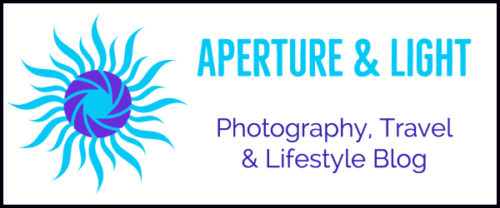Photographing night skies enchants artists and viewers. Night photography reveals what happens when the rest of the world sleeps. Beautiful visual artistry with long exposures is more than using long shutter speeds, tripods and remote shutter releases.
Artistry in night skies photography begins with forethought of intent and subject. Knowing what you want to capture is half the battle, the other half is knowing what settings and tools to apply. This is especially true with long exposure photography. Consider the following:
- Visual artistry: What is the feeling, ambience that pulls you in? From an artistic point of view, what captures and holds your eye?
- Technique: Does your composition have a non-moving element for focusing? Or, do you need infinity focusing? We’ll share multiple subjects, along with exposure setting tips.
Photographing Night Skies:
Visual Artistry in Our Night Skies ~ Aurora Borealis & the Milky Way
When photographing night skies, darkness surrounds us. Like a dream, Aurora’s wispy light (Northern Lights) hovers bright, soft or somewhere in between. At times her movement floats in time. Other times, it’s a dance across the sky with spirals and turns. Her pace and intensity guides our settings.
With the Milky Way, the fainter twinkling lights sparkle against a deep midnight sky.
To pop the Aurora and Milky Way, frame the moment with a landmark element or point of interest. Reflections, structures, light beams add depth while emphasizing the sky. Strong contrasts emerge between lights and darks. Dramatic contrasts downplay the need for defined shadows.

Technical tips for photographing night skies:
- Bring in the light with a wide open shutter. An f/stop of 1.8, 2.8 optimizes available light.
- Leverage depth by focusing on infinity. Using your widest angle lens, focus on a point in the distance and switch to manual focus to hold the distance steady. It’s always a good reminder to recompose your focus while shooting skies. Little things that go bump in the night shift our lenses out of focus.
- Play with your ISO range. Work from 1600 to 3000 as light intensity shifts quickly.
- With a weak Aurora, shutter speeds may need to be a bit longer. However, the longer the shutter is open, the bigger the stars become in the image. They may complement or detract from the image.
- With the Milky Way, smaller starlights may call for longer shutter speeds. I’ve started with a shutter speed of 10 seconds with a range up to 30 seconds. The amount of surrounding light and nearby light pollution affects color and tint. For example, blue-black skies turn to golden-brown with city lights from the distance.
When working with an active Aurora as in the ones pictured above, constantly shifting your settings gives more options for post processing. A very active Aurora almost feels like you’re playing a video game!

A calm Aurora and a Milky Way offers a gentler photographic experience. The four steps above still apply at a more relaxed pace.

Star Trails
Star trails interprets what’s happening over a burst of time. Using the North Star as our guide, we create circular dancing starlight. To find the North Star, I use The Sky Guide app on my smartphone.

Our Milky Way images use higher ISO settings and shutter times of 30 seconds or less. Conversely, our star trails settings are for a longer period of time. Our shutter speeds are longer and our ISO’s are much lower. Otherwise sensor noise would take over with long exposures.
As a starting point, try using an ISO of 100 or lower combined with a shutter speed of 30 minutes. That’s correct, 30 minutes. The outcome is circular beams of light.
Tools for Photographing Night Skies:
When photographing night skies, the following three items are critical for successful results:
- Tripod – Stability
- Remote shutter release or exposure delay mode – Avoid touching the camera with long exposures due to shutter shake. Using one of these minimizes shutter shake and increases image quality.
- A coordinated group plan – When photographing night skies, it’s natural to want review our images on our screens. If other’s have their shutters open for a seconds, our light is not going to make others happy. Even if the light is minimal. Coordinating the starts and stops as a group maintains harmony and good images!
Enchanting night skies start with our artistry, imagination and applying proven technical tips. See you on the dark side!
Additional Reading:
- Before night falls, there’s always a sunset. Fast Tips: Stunning Sunset Photography
- Want to go visit Iceland to see the Northern Lights? Ultimate Guide to the Northern Lights in Iceland
- Norway and Northern lights: Visit Norway’s Northern Lights

